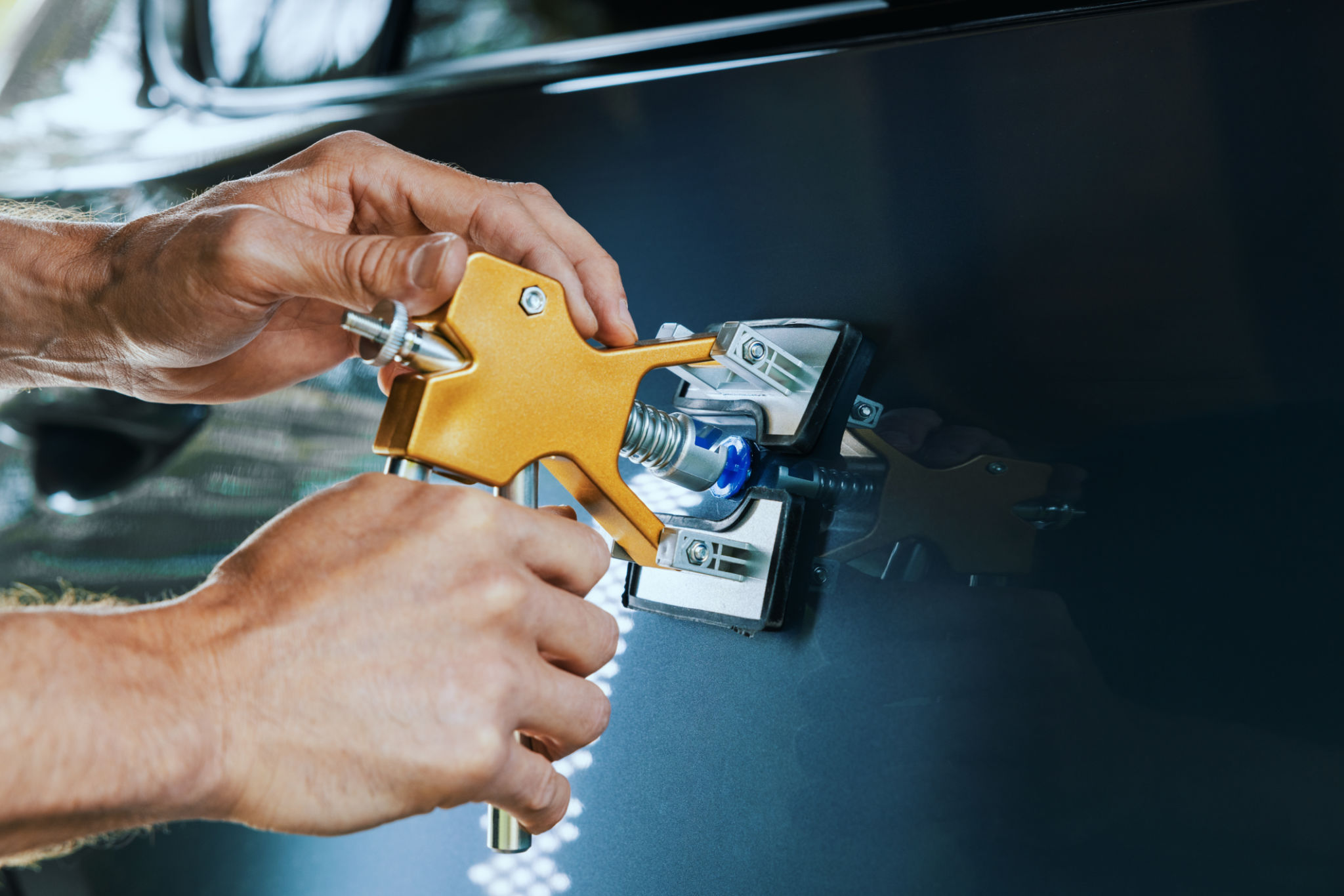Exploring the Latest Trends in Paintless Dent Repair Technology
Introduction to Paintless Dent Repair
The world of automotive repair is constantly evolving, with new technologies and techniques emerging regularly. One of the most innovative advancements in recent years is Paintless Dent Repair (PDR), a method that allows for the removal of minor dents and dings without the need for repainting. This technique not only saves time and money but also preserves the original factory finish of vehicles.
PDR has become increasingly popular among car owners and repair shops alike, thanks to its efficiency and effectiveness. Let's explore some of the latest trends and advancements in this exciting field.

Advanced Tools and Techniques
One of the key trends in PDR technology is the development of more sophisticated tools and techniques. Technicians now have access to a variety of specialized tools designed to reach difficult areas and apply precise pressure needed to massage dents out from the inside. These tools range from rods and hammers to specially designed glue pulling systems.
Moreover, the use of LED lighting systems has revolutionized the process by providing technicians with a clear view of the dent's contours, allowing for more accurate repairs. These advancements have significantly improved the quality and speed of PDR services.
Digital Assessment Technologies
In addition to tools, digital assessment technologies are also reshaping the PDR industry. Mobile apps and software solutions now enable technicians to assess damage more accurately by providing 3D imaging and digital estimates. These technologies not only enhance the precision of repairs but also streamline communication between technicians and clients.

Sustainability and Environmental Impact
As environmental concerns become more pressing, the automotive industry is under increasing pressure to adopt sustainable practices. PDR aligns perfectly with this trend, as it eliminates the need for paint and other chemicals typically used in traditional repair methods. This reduces the carbon footprint associated with automotive repair.
Furthermore, PDR minimizes waste generation by allowing car owners to retain their vehicle's original parts rather than replacing them. This sustainable approach is becoming a significant selling point for both repair shops and environmentally conscious consumers.
Training and Skill Development
With the growing demand for PDR services, there is a corresponding need for skilled technicians. Many training programs now offer specialized courses in PDR techniques, ensuring that technicians are well-equipped to handle a wide range of dent repairs. These programs focus on hands-on training, emphasizing both technical skills and customer service.

The Future of Paintless Dent Repair
The future looks bright for PDR as technology continues to advance. Innovations such as artificial intelligence and robotics are being explored to further enhance the precision and efficiency of dent repair processes. These advancements could lead to even faster repair times and lower costs for consumers.
As these technologies evolve, we can expect PDR to become an even more integral part of the automotive repair industry, offering an attractive combination of quality, speed, and sustainability.
Conclusion
Exploring the latest trends in paintless dent repair technology reveals a promising future for this innovative field. As new tools, techniques, and technologies emerge, PDR continues to set new standards in the automotive repair industry. Whether you are a car owner looking to preserve your vehicle's appearance or a technician seeking to enhance your skills, staying informed about these trends is essential.
With its myriad benefits, PDR is poised to remain a popular choice for vehicle repairs, aligning with both economic and environmental goals.
